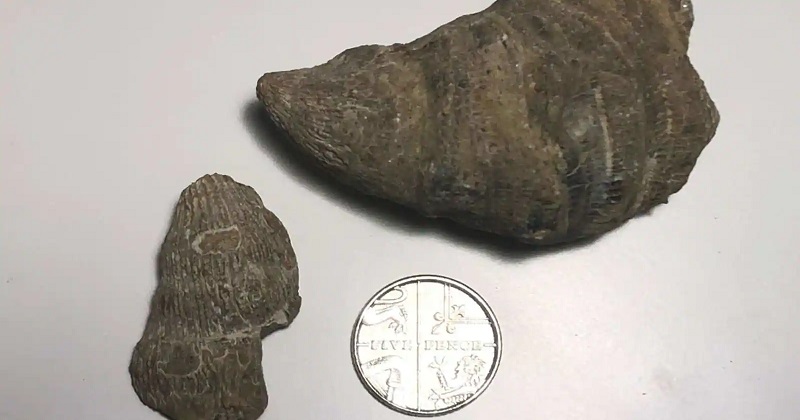
England; An Indian-origin boy who is 6-year-old states he is “really excited” after he discovered a fossil from millions of years ago while shoveling in his garden in the West Midlands province of England. Sendak Singh Jhamat/ Sid was applying a fossil-hunting kit he got as a Christmas present while he came over a rock that seemed like a horn.
“I was just digging for worms and things like pottery and bricks and I just came across this rock which looked a bit like a horn and thought it could be a tooth or a claw or a horn, but it was a piece of coral which is called horn coral,” the youth said.
“I was excited about what it was,” he said. According to a report, his father Vish Singh was capable to classify the horn coral within a fossil group he is a member of on Facebook and accounts the fossil is between 251 to 488 million years old.”We were surprised he found something so odd-shaped in the soil… he found a horn coral, and some smaller pieces next to it, then the next day he went digging again and found a congealed block of sand,” said Vish Singh.

“In that, there were loads of little mollusks and seashells, and something called a crinoid, which is like a tentacle of a squid, so it’s quite a prehistoric thing,” he said. Singh assumes the fossil’s showings indicate it is most apparent a Rugosa coral and that the time that they existed from was between 500 and 251 million years ago the Paleozoic Era.” England at the time was part of Pangea, a landmass of continents. England was all underwater as well… that’s quite a vital period,” said Vish Singh.
The family, from Walsall, said they do not exist in a region known for its fossils, like the Jurassic Coast in the south of England, but that they do have a portion of natural clay in the garden where the remains were discovered. Singh added: “Lots and lots of people have commented on how amazing it is to find something in the back garden.”They say you can find fossils anywhere if you look carefully enough, but to find a significantly large piece like that is unique.”They now expect to describe Birmingham University’s Museum of Geology about their discovery.

Post Your Comments